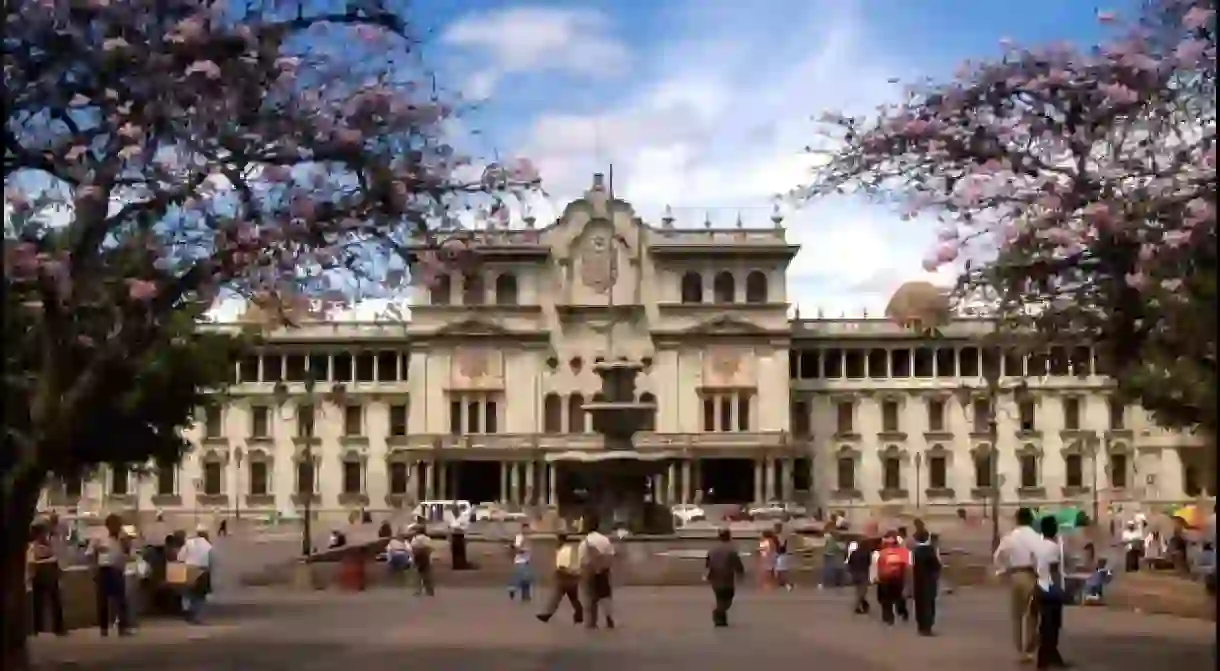A Brief History of Guatemala City's Palacio Nacional De La Cultura

Taking pride of place in Guatemala City’s Plaza Mayor is the Palacio Nacional de la Cultura – National Palace of Culture. As the capital’s grandest and most ornate building, it’s one of the top tourist sights in the city. Formerly the home of President Jorge Ubico, the palace is now a museum and every day thousands of tourists visit to learn about its fascinating past and what it’s come to represent. So why is the Palacio Nacional de la Cultura so interesting? Here’s a brief history of it.
Construction of the palace began in 1939 on the orders of Guatemala’s then-president, the dictator General Jorge Ubico. Built by prison laborers under horrendous conditions (the prisoners received 0.25 cents a days for tireless work), it took four years to complete. Made out of brick and concrete, it’s an intriguing grey-green color due to the concrete and oxidized copper that was used to coat the exterior. Green was General Jorge Ubico’s wife’s favorite color, and the palace’s nickname is consequently El Guacamolon – The Big Guacamole.

The elegant interior of the building fuses different styles throughout. General Ubico liked Spanish-style buildings as well as Arabic influences, which you can see on the fountains. Dotted throughout the palace are enormous murals depicting Guatemala’s history – from the Mayan kingdoms to the Spanish rule through to Guatemala’s independence. There are also many quirky traits throughout the building, some of which give a unique insight into General Ubico’s unpleasant personality; e.g. the rails in the palace have copper bars running through them which were either heated or frozen (depending on the weather) so people couldn’t lean on them.
There are 350 rooms inside the palace, many of which are off-limits, but the ones that are accessible are truly spectacular. The magnificent Sala de Recepción is one of the most famous rooms, and is used only for the most important ceremonies in Guatemala. Hanging from the ceiling is a huge Bohemian crystal chandelier that weighs two tons; perched upon it are golden quetzals, the incredibly rare national bird of Guatemala. Ubico was big on chandeliers, and an equally impressive solid 18-karat gold one hangs from the ceiling of the Sala de Banquetes.

Another curious quirk of the palace are the traffic lights throughout. Traffic lights inside a building may seem like an odd idea, but not to General Ubico. He didn’t like people thronging about the hallways when he was in the building, so the light system informed people of when they could and could not walk around. When the lights were red, it meant Ubico was out and about, so the hallways must be empty, unless you wanted to be punished. When they were yellow, only government officials were allowed to walk around, and when they were green, everyone could move freely.
Tours of the palace take 45 minutes and are available every day; be sure to stop off at the Presidential Balcony, where you can look down onto the plaza and imagine yourself as a tyrannical dictator addressing the nation.














